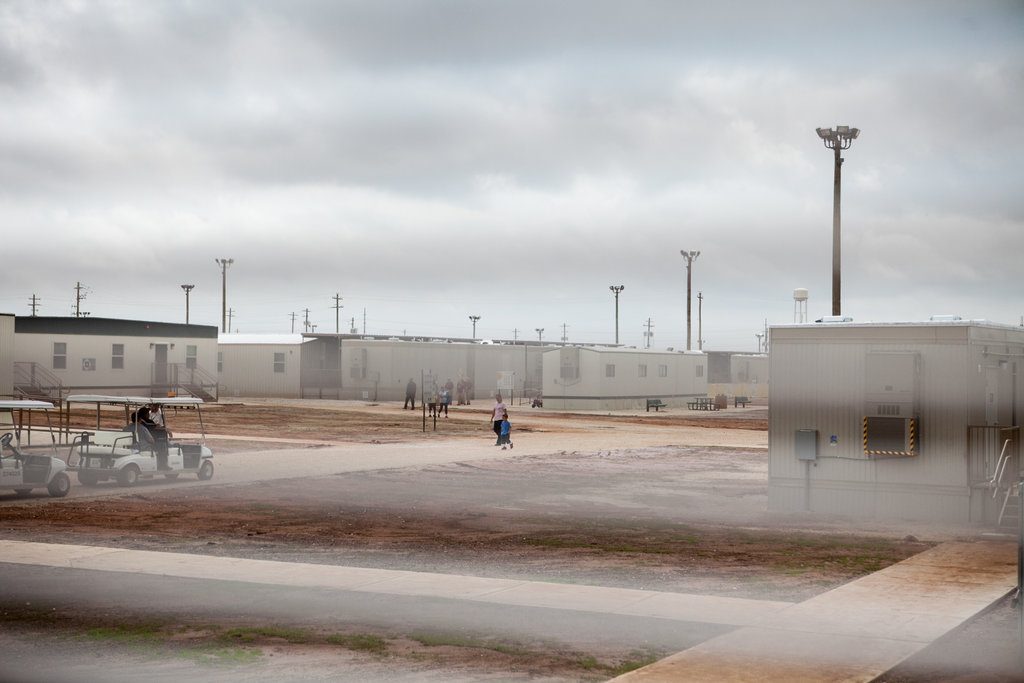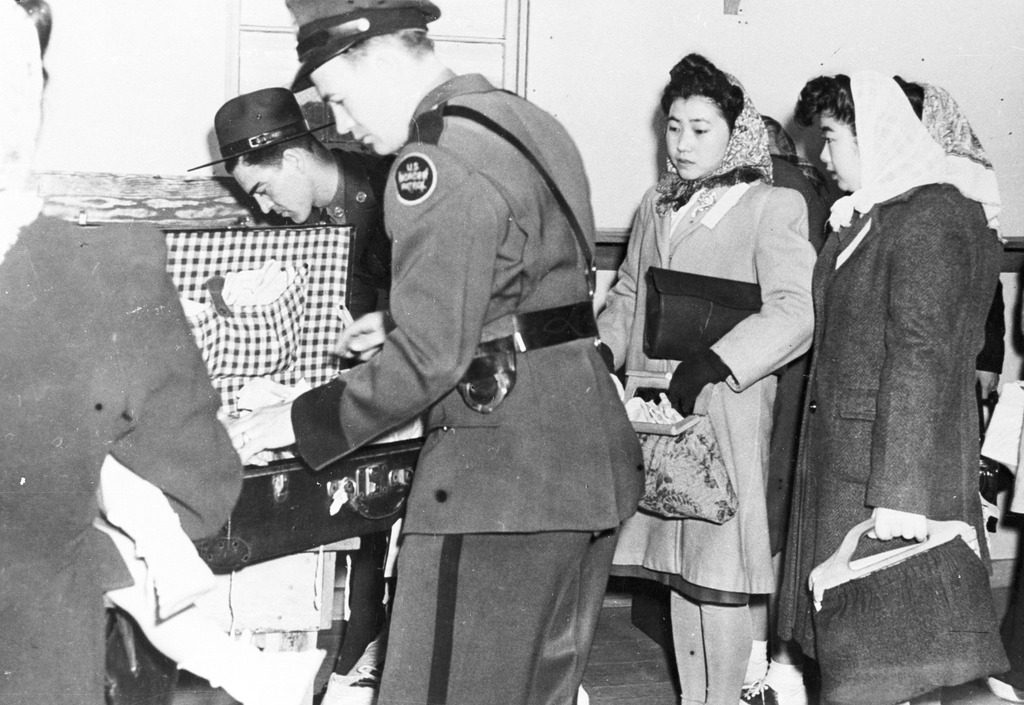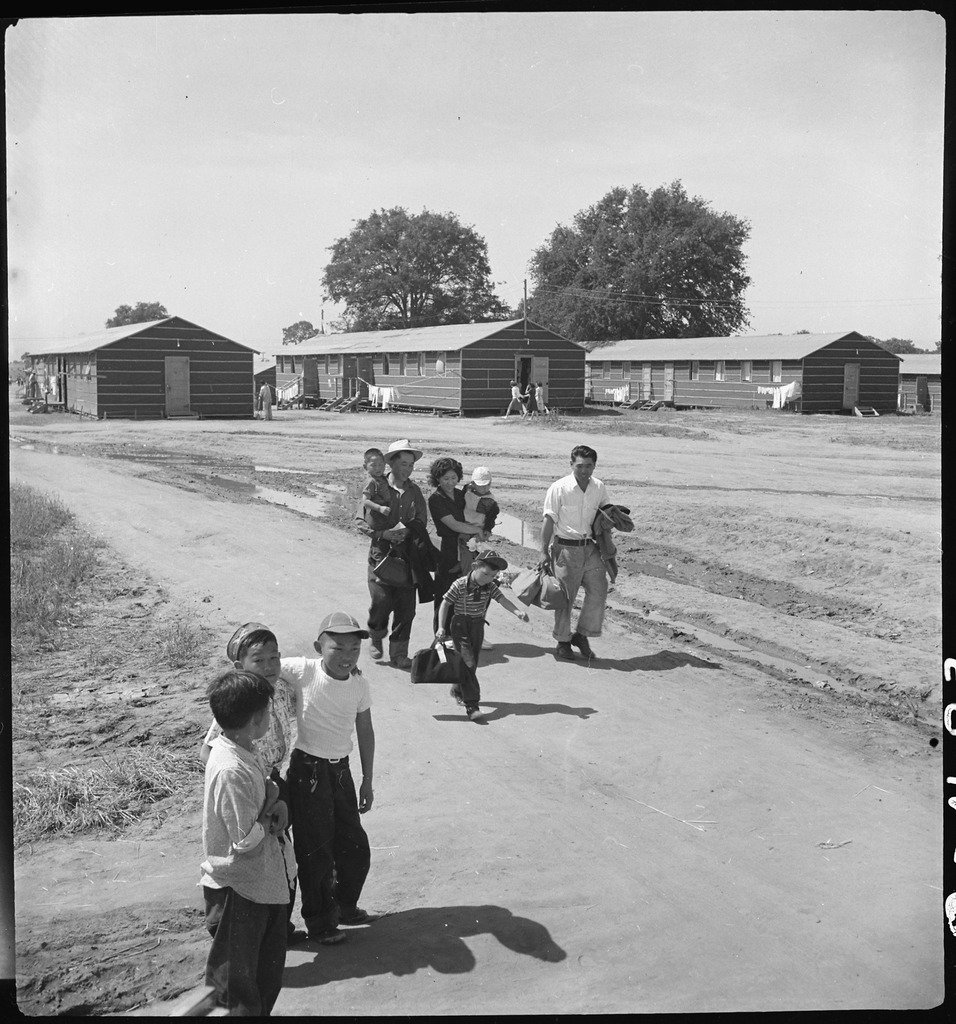August 9, 2016
In the last two years, an increasing number of Central American families and unaccompanied minors have entered the U.S., most of them asylum-seekers from Honduras, El Salvador, and Guatemala. Immigration Customs and Enforcement (ICE) has responded with a dramatic expansion of its family detention program, making the current system the largest since the World War II incarceration of Japanese Americans. (ICE operates three family detention centers with a capacity for roughly 3,500 migrants at a time, compared to a single facility with less than 100 beds in 2014. The government does not release statistics on yearly totals or average length of stay, but estimates put the number of detainees last year at about 45,000.)
In light of this shared history–and attempts to dismiss it as an apples-to-oranges comparison–we’d like to offer a reminder that, yes, there are some troubling similarities between Japanese American and Latino experiences in family detention, and yes, we need to keep having this conversation.

Children behind bars
Psychotherapist Satsuki Ina, who was born in Tule Lake and spent the early years of her childhood in Crystal City, visited the Karnes County “Residential Center” and connected her own experiences with those of families in detention today: “We too lived in a constant state of fear and anxiety, never knowing what our fate would be. We too were forced to share our living spaces with strangers, line up for meals, share public latrines, respond to roll call, and adjust to ever-changing rules and regulations with the eyes of the guards constantly trained on us.”
Not only are there parallels in the actual, physical conditions of confinement, but Ina and others have observed psychological symptoms in these children (depression, anxiety, PTSD, insomnia, stress-induced weight loss–it’s a long list) that mirror the trauma seen in Nikkei youth during and after WWII. Add to this the same lack of access to adequate healthcare and education, the same heightened exposure to sexual abuse, the same disruption of family units when fathers are sent to separate facilities and overburdened mothers are tasked with picking up the pieces inside a hostile environment, and it should be clear that this is no place for kids.
“Better safe than sorry”
A full 88% of families detained in 2015 established a credible asylum claim in preliminary screenings. That is, judges and immigration officials have determined their fear of persecution is real and based in fact and not, as presidential candidates and racist uncles would have you believe, an excuse to get on that sweet government dole. Yet many of them remain in custody — without access to legal counsel, slated for deportation despite favorable rulings — not because they pose a threat but as a “message” to others that “we will send you back.”
In the aftermath of Pearl Harbor, politicians were quick to argue that Japanese Americans were being taken from their homes in the name of public safety. While there is a rich and varied canon of “Oust the Japs” apologism, one of the main justifications for incarceration was the specter of a few terrorists and spies lurking within the larger Nikkei community — and the idea that there was no way to get to the bad apples without throwing out the whole bunch. Japanese Americans were sent to camp not because of any actual misbehavior, but to preempt hypothetical crimes someone might someday commit.
This strategy of incarcerating an “invasive” immigrant group as a means of deterring imaginary crime was perfected long before the current migrant crisis.

Denying due process
During WWII, the complete disregard for Issei rights was justified by their status as “enemy aliens.” Arrests without charge, confiscated property, frozen bank accounts, indefinite detention with zero access to legal aid–all of this was accepted on the basis that authorities were not obliged to respect the due process rights of non-citizens. The fact that this policy hinged on a racist naturalization law preventing Asian immigrants from becoming citizens was conveniently ignored. (As were the thousands of American-born children swept up with their parents.)
Today, families fleeing political collapse and horrific violence in the Northern Triangle are portrayed as “illegals” flouting the rules and cutting in line. Over and over again we are told that these people are not citizens of our country and therefore should not expect to receive special treatment. (This idea that migrants are being “coddled” in government custody is also not new.) But while it is illegal to withhold legal counsel to prisoners, illegal to detain immigrants for the sole purpose of preventing future immigration, illegal to imprison child migrants except under extraordinary circumstances, illegal to hold those children in facilities not in compliance with child safety regulations, there are no laws against seeking a better, safer life in another country. U.S. citizenship is not a prerequisite to be treated like a human being with basic human rights.
From “undesirables” detained at Ellis Island at the turn of the century to the migrant workers who are demonized as freeloaders yet form the backbone of a billion-dollar agricultural industry, attempts to restrict access to American prosperity are continually recycled and repackaged with each new wave of migration.
As in WWII, working class immigrants are being denied a legitimate path to citizenship and then criminalized for failing to join the ranks of “real” Americans. As in WWII, a policy of mass incarceration is being shaped by race-based assumptions and false claims of national security–despite evidence that the imagined threat is, well, imaginary. We know how this story played out last time. If we truly believe in “never again,” we will rewrite this latest chapter and support children and families in ICE custody.
—
By Nina Wallace, Densho Special Projects Coordinator
[Cover photo: Original WRA caption: Sacramento, California. Another family of Japanese ancestry has just arrived at this Center by bus. Their baggage has been inspected for contraband and they have been registered, medically examined and are now being escorted by a volunteer guide to their assigned location in the barracks. Photo by Dorothea Lange, National Archives and Records Administration.]
